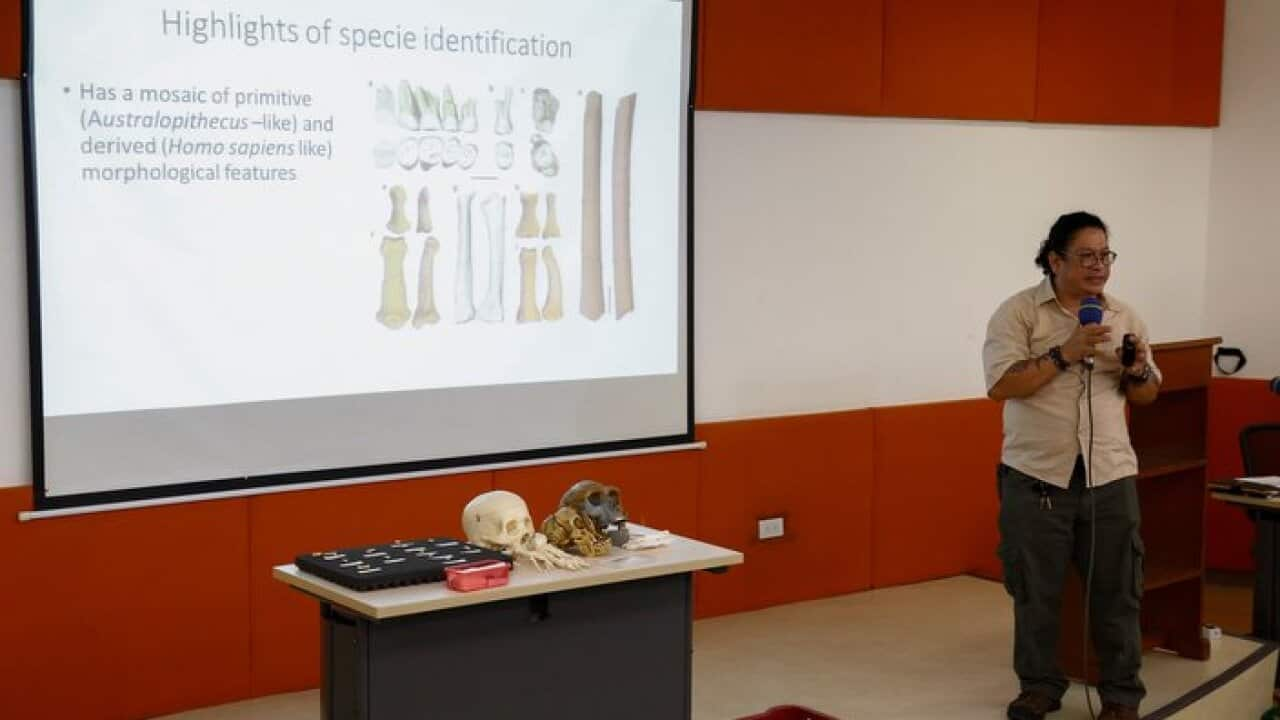The new species, Homo luzonensis, is named after Luzon Island, where the more than 50,000 year old fossils were found during excavations at Callao Cave.
Co-author and a lead member of the team, Professor Philip Piper from The Australian National University (ANU) says the findings represent a major breakthrough in our understanding of human evolution across Southeast Asia.
The researchers led by Filipino archeologist Dr. Armand Mijares excavated the Callao Cave in Cagayan province of the northern Philippines during the years 2007, 2011 and 2015. Tests on the fossils showed that they could be around 50,000 to 67,000 years old.
They uncovered the remains of at least two adults and one juvenile within the same archaeological deposits.
Professor Piper talks to SBS Filipino about the findings




